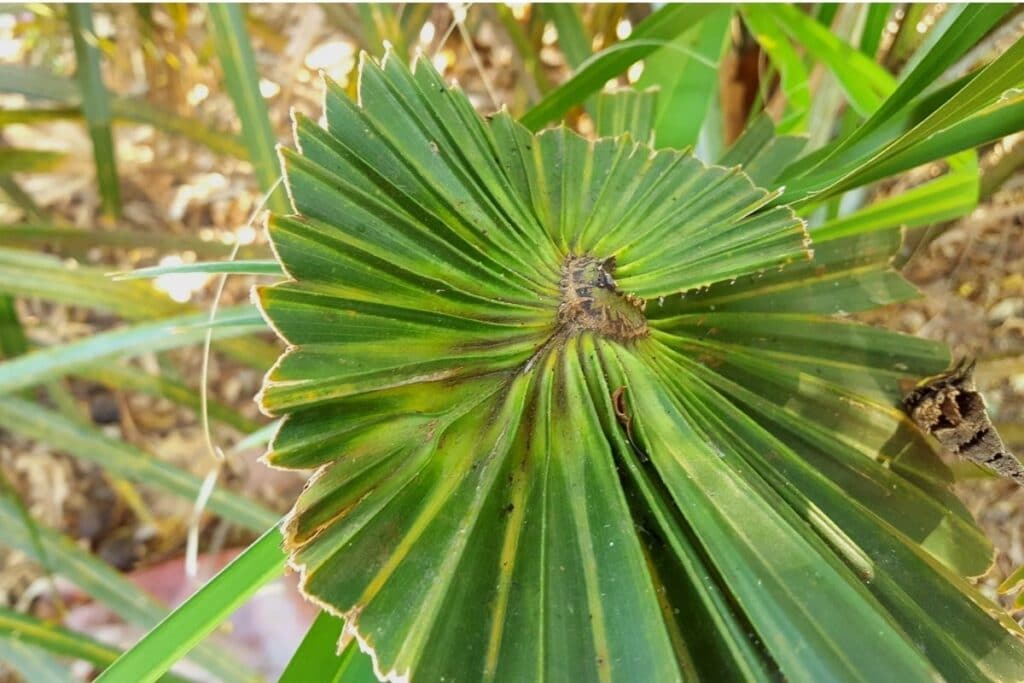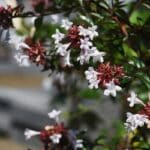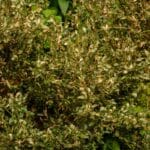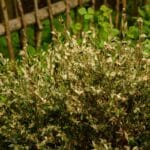Not all palms need hot, tropical conditions to thrive in. The dwarf palmetto (Sabal minor) is a fantastic dwarf palm species native to the USA which can be grown in a surprisingly wide range of environments. Read on to learn more about growing and caring for this fascinating evergreen plant.
What Is A Dwarf Palmetto Plant?
The dwarf palmetto, Sabal minor, is a small species of palm naturally found in the extreme southeastern areas of the United States and the northeast of Mexico. This plant usually grows about 6 ft(1.8m) tall and equally wide.
Each palm may produce 5 to 10 blue-green leaves. The leaves of Sabal minor are very large in size, reaching a width and length of around 1-3 feet (0.3-1m). Each leaf consists of 30 to 40 leaflets which are palmately compound (fan-shaped).
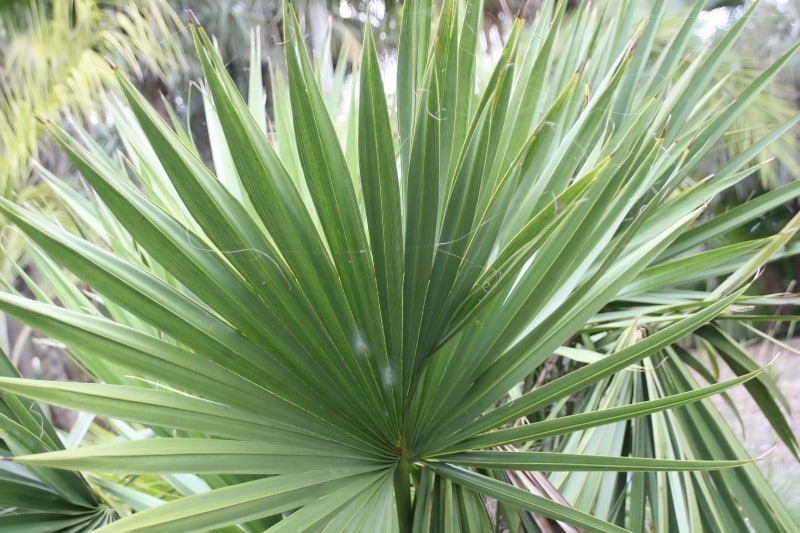
Dwarf Palmetto Flowers
Dwarf palmettos flower in summer, from May to July, and produce small cream-white flowers that are borne on an inflorescence that may be as much as 6ft(1.8m) tall. Each flower measures just 0.2 inches(5mm) across and has three petals.
This inflorescence, known as a panicle, rises above the tops of the leaves and produces a lovely fragrance. These flowers mature into small dark brown to black fruits which measure about half an inch (1.25cm) across.
How To Grow A Dwarf Palmetto
Dwarf palmetto plants are best grown from seed. Seeds germinate readily but slowly and can be sown fresh, ideally in a muddy substrate or a medium with good moisture-retaining properties such as perlite.
Soaking the seeds in warm water for a day or two may speed up the process which can take six to eight weeks. During this time, ensure that the growing medium is kept moist and on a warm windowsill or greenhouse if in a cool climate.
This plant grows at a slow to moderate rate, depending on the conditions where it is planted. Thus, plants grown in colder climates, where leaf burn occurs and pruning is necessary, will be slower growing specimens.
That being said, Sabal minor should not be planted in areas that are prone to strong cold winds, or in deep shade in cooler areas.
This drought tolerant plant is adaptable even in poorly drained soils and can be grown in a variety of soil pH from acidic to alkaline. Sandy to clay soils are acceptable and your soil should contain some organic material but should not be overly rich.
This plant has moderate water requirements and can grow well in damp locations, even standing water may be tolerated for short periods of time.
Sabal minor can be grown in partial shade to full sun and is hardy to USDA Hardiness Zones 10-7 and UK Zone H8.
Care And Maintenance
Dwarf palmettos, known for their cold hardiness, can endure freezes and snowfalls due to their protected underground stems. Considered a low-maintenance species, they require watering during their initial two years or until established, and providing mulch to young plants offers protection in colder regions while maintaining proper soil moisture.
Dead or browning fronds should be pruned/removed with a sharp implement, close to the stem but without damaging it. Older flower/fruit stalks may be removed once dry for a tidier look.
These plants, while generally problem-free, may occasionally develop fungal infections that can be treated with an appropriate fungicide. Certain nutrients, such as Magnesium and Manganese, are generally required for palms to thrive and S. minor is no different. If these are lacking in your soil, a commercially available palm fertilizer can be used.
Uses
Gardening Uses
The dwarf palmetto bush provides an interesting tropical accent in cooler climates. The blue-green evergreen foliage of this plant provides interest throughout the winter.
S. minor works well as an understory planting of other palms or trees and its tolerance for damp, poorly drained areas make it a good choice for shady waterlogged areas. It makes an excellent foundation plant in groups around doorways or as a focal point in a central space.
S. minor can also be grown in containers and pots, indoors in a well-lit area, or outdoors.
Traditional Uses
As a medicinal plant for Native Americans, preparations were used to treat eye irritation, high blood pressure as well as kidney conditions.
Parts of the plant, such as the roots and fruits were also eaten on occasion. The leaves also had several uses including thatching, basket-weaving and fan making.
Wildlife Uses
The fruits of the dwarf palmetto palm are enjoyed by a variety of wildlife, including raccoons, squirrels and various birds. This plant is described by some as highly deer resistant although other sources mention its attractiveness to grazing cattle.
FAQs
Can you transplant Dwarf palmetto?
Yes, dwarf palmetto (Sabal minor) can be successfully transplanted, but it’s important to do so with care.
Is saw palmetto same as Dwarf palmetto?
No, saw palmetto (Serenoa repens) and dwarf palmetto (Sabal minor) are different species, although they both belong to the palm family.
In conclusion, the dwarf palmetto shrub makes for a very interesting and attractive evergreen plant for any garden. This plant’s hardiness and small size make it the ideal palm for use in cooler climates and smaller spaces.
For more similar shrubs you can grow, check this list.
*featured image by nabiru/depositphotos

